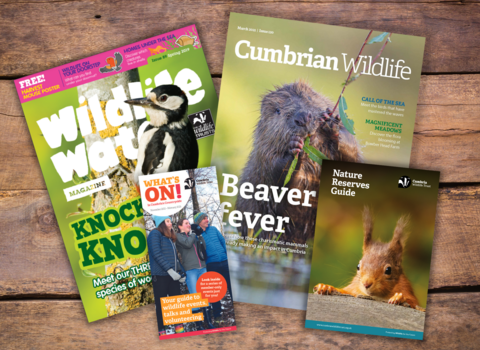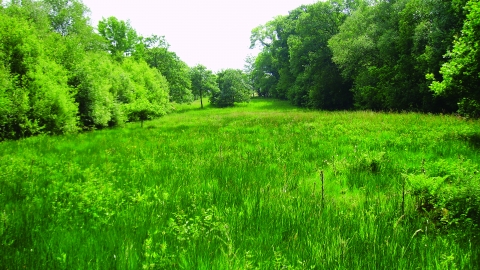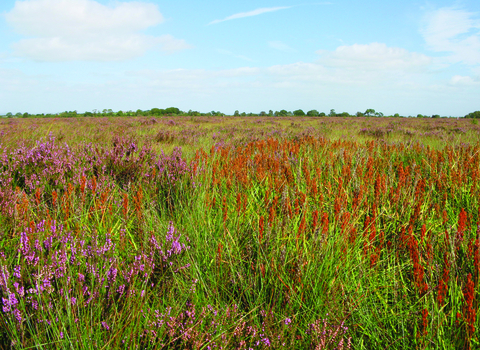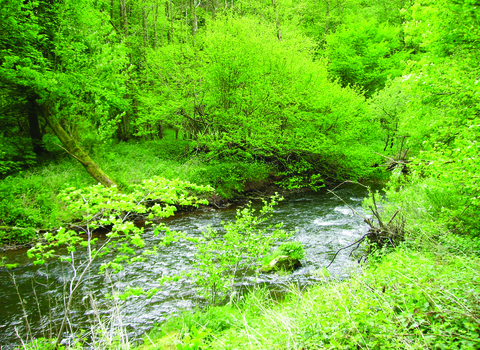Location
Know before you go
Dogs
When to visit
Opening times
Open all year roundBest time to visit
April to AugustAbout the reserve
Wildlife highlights
- Listen to springtime birdsong in the atmospheric oak and birch woodland.
- Common knapweed, devil’s-bit scabious, meadowsweet and wild angelica are abundant in the wetter areas of the grasslands and flower from June until September.
- Summer is a good time to spot butterflies such as ringlet and painted lady.
A modified mire
Orton Moss is a former raised mire which has been greatly modified by human activities. It was divided into a number of strips (or stints) for peat cutting and grazing in the 19th and early 20th centuries.
To early naturalists it was an important wildlife site noted for rare butterflies, but these have since disappeared due to the increase in woodland cover. It was once the haunt of the rare wood white, now extinct in Cumbria. Also the large heath, a species of open raised mire habitats, and the marsh fritillary which was last recorded in 1980.
What makes Orton Moss so special?
Outside the restored grassland areas wet woodland dominates. Here willows, downy birch and alder thrive amongst carpets of Sphagnum moss, remote sedge, bottle sedge and ferns, creating a swampy feel.
Drier areas feature oak and birch woodland where the ground flora is more varied with bilberry, broad buckler-fern, wood sorrel and mosses.
Diverse habitats
Much of the southern end of the reserve is grassland, interspersed with scrub and woodland. Here you can find devil's bit scabious, knapweed, sneezewort, meadow sweet and angelica in the wetter areas.
To the north of the grassland, extending across the site from east to west, is wet woodland, dominated by willows, downy birch and alder. Here the carpets of remote sedge and mosses give many areas of this woodland a swampy feel.
Look out for Royal Fern which grows here. On the more northern half of the nature reserve the woodland becomes drier with some areas of regionally important oak woodland.
The ground flora in these woods is varied. In some areas mosses and ferns are dominant, whilst in others grassland or heathland plants such as bilberry are more common.
On the wing
Orton Moss is an important site for invertebrates. In the grassland area this is due to the rich variety of food plants and the complex edge habitat between the grassland and the scrub and woodland.
In summer look out for small pearl bordered fritillary, dingy skipper, wall butterfly and small heath butterflies.
Birds likely to be seen include willow tit, woodcock, great spotted woodpecker and willow warbler.
Keeping it special
Cumbria Wildlife Trust has worked to clear areas of secondary woodland and scrub, and has reinstated grazing to restore these areas of grassland alongside Bucknill’s Field.
In the woodland non-native trees including beech are being felled.
Recent history
Bucknill’s Field was purchased in 1964 with money donated by Canon E J Bucknill.
Two areas of woodland are leased from Natural England.
A third area (1.3ha) was purchased in 2009 while the rest was acquired in 2010 after an appeal to members, with a smaller area managed under lease from other landowners.
Getting here
By Car:
From Carlisle take A595 towards Thursby. Once out of town, at the roudabout, take the A689 M6/Hexham turnoff. At the next roundabout take a left turn towards Great Orton. Take the next right signposted Great Orton/Thurston Field. Approximately 1.2km/0.7 miles down this road a track goes off to the right. Park here and walk down track onto the reserve (200 metres). Please take care not to obstruct field gates. Other reserve areas can be accessed from the series of footpaths and bridleways.
By bicycle:
Orton Moss nature reserve is 4.5 km/3miles from National Route 7 Sunderland and Inverness and National Route 72 Hadrian’s Cycleway.
By public transport:
Buses run from Carlisle and Wigton to Great Orton.
Species
Habitat
Contact us
Environmental designation
Did you know?
Orton Moss is the site where ecological geneticist E B Ford conducted his original genetic studies on the marsh fritillary butterfly in the 1930s.
Upcoming events at Orton Moss Nature Reserve
If there are any upcoming events at Orton Moss Nature Reserve we'll show them to you below.

Support our conservation work on this nature reserve,
and protect Cumbria's wildlife & wild places.








